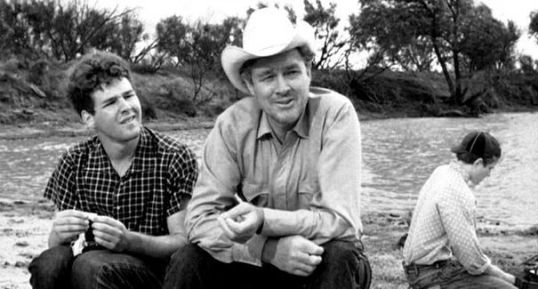
 Peter Bogdanovich’s 1971 film about coming of age in a small north Texas town in the 1950s has endured as an American film classic.
Peter Bogdanovich’s 1971 film about coming of age in a small north Texas town in the 1950s has endured as an American film classic.
The Last Picture Show, the breakthrough 1971 film by Peter Bogdanovich, takes place in a declining north Texas town in the early 1950s, where a group of teenagers experience loss and self-discovery. Among them is the quiet Sonny, played by Timothy Bottoms, who has an affair with the school coach’s wife (Cloris Leachman), but is attracted (like all the other boys) to the beautiful, spoiled Jacy (Cybill Shepherd), the girlfriend of his best buddy Duane, played by Jeff Bridges.
Adapted by Larry McMurtry from his own novel, the film avoids nostalgia, instead evoking the texture of lonely small-town life with all its pain and confusion. Ignorance about sex, and a consequent obsession with it, are the hallmarks of adolescence in this era, but Bogdanovich bravely focuses on the pathetic aspects of the young characters’ fumblings rather than trying to make light of it. The picture was remarkably frank even for its time, and the clarity and openness of the treatment help make it just as effective today.
Telling a story in which the central character is essentially passive can be tricky, but Timothy Bottoms makes you believe in Sonny, with his neediness and naiveté, and the basic decency inside. His brother Sam Bottoms plays a mute boy who looks up to him. Bridges is great as Duane, who hides how little he knows behind an aggressive veneer. At 22, he still looks like a baby, as does Randy Quaid in a small part. Jacy is heartless, conceited, and shallow—this was Cybill Shepherd’s first role and she does fine. Also on hand are Ellen Burstyn and Eileen Brennan. Best of all, though, is Ben Johnson as Sam “the Lion,” the owner of the town’s movie theater, pool hall, and diner. Sam represents a past in which free spirits had more room to roam, and Johnson gives the role a perfect mix of cowboy gruffness and old-timer sentiment.
The decision to shoot in black-and-white was a rare one by the 1970s, but in this case unquestionably the correct one. The beautiful photography by Robert Surtees makes the town look barren and forlorn. We’re meant to see the demise of the town’s movie house as emblematic of the end of a period of certainty in American life, and the beginning of a time of uprootedness and doubt, but even this symbolism is understated, blending in with the movie’s almost seamless feeling for its time. Another interesting feature is that there’s no musical score—whatever music we hear is playing on the characters’ radios. However, they listen to the radio a lot, and most of the time what’s playing is Hank Williams. The film is practically a showcase for the great country singer’s best recordings—his voice permeates the movie, giving it a special flavor.
The Last Picture Show is stark in atmosphere yet casual in its style. There’s nothing quite like it, even in that great period of the early 70s, and it’s definitely one of the top films of that era.

